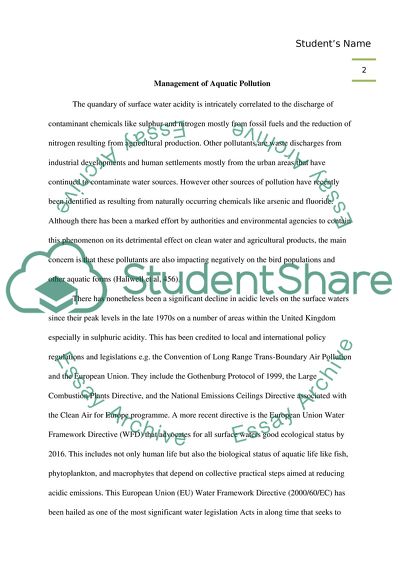Cite this document
(The Problem of Surface Water Acidification Coursework, n.d.)
The Problem of Surface Water Acidification Coursework. https://studentshare.org/environmental-studies/1721934-after-30-years-of-scientific-study-and-policy-development-to-tackle-the-problem-of-surface-water-acidification-what-lessons-are-there-for-the-management-of-other-forms-of-aquatic-pollution
The Problem of Surface Water Acidification Coursework. https://studentshare.org/environmental-studies/1721934-after-30-years-of-scientific-study-and-policy-development-to-tackle-the-problem-of-surface-water-acidification-what-lessons-are-there-for-the-management-of-other-forms-of-aquatic-pollution
(The Problem of Surface Water Acidification Coursework)
The Problem of Surface Water Acidification Coursework. https://studentshare.org/environmental-studies/1721934-after-30-years-of-scientific-study-and-policy-development-to-tackle-the-problem-of-surface-water-acidification-what-lessons-are-there-for-the-management-of-other-forms-of-aquatic-pollution.
The Problem of Surface Water Acidification Coursework. https://studentshare.org/environmental-studies/1721934-after-30-years-of-scientific-study-and-policy-development-to-tackle-the-problem-of-surface-water-acidification-what-lessons-are-there-for-the-management-of-other-forms-of-aquatic-pollution.
“The Problem of Surface Water Acidification Coursework”. https://studentshare.org/environmental-studies/1721934-after-30-years-of-scientific-study-and-policy-development-to-tackle-the-problem-of-surface-water-acidification-what-lessons-are-there-for-the-management-of-other-forms-of-aquatic-pollution.


